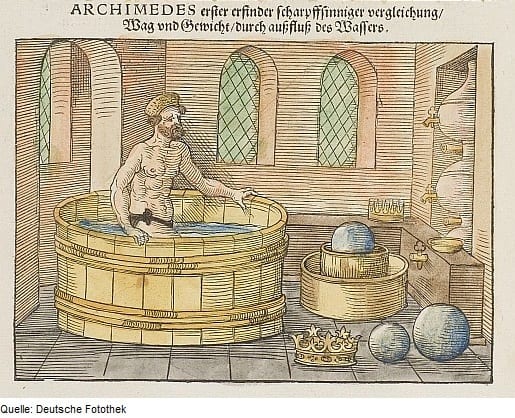Eureka! Creative Scientists Need Coffee Breaks
November 4th, 2019
by Andrea Lloyd

The click-clack of fingers tapping at the keyboard familiarly rings throughout the office, no matter what office you’re in. You neighbor pops his head over the cubicle wall: “Coffee?” It’s a ritual that rings through all of us – when the going gets tough, we go out for a coffee. By the time we come back, sometimes we magically know the answer to our problem.
Vivienne Tam, a writer for Science, recently shares her take on why scientists need more coffee breaks. Tam reveals her life in the lab: crunching away at numbers and publishing papers was her focus for a long time. But after an introduction to a new lab culture, communal coffee breaks were instrumental in discussing new ideas in non-threatening environments and providing peer support for shared struggles only labmates can understand.
While at NASA Langley, fellow interns of mine attended something called “Lecture Series.” Every Thursday, a group of co-workers would convene at Afterburners, the on-site bar. In all honesty, it was a time to hang-out and drink. But as all engineers, researchers, and scientists know, the topics could often turn on a pinpoint to technical thought experiments. Ergo, a drink near the lab could lead to interesting discussions on the science of Dungeons and Dragons or about SpaceX’s Starship’s interesting new design.
Why Do Scientists Need Coffee Breaks?
Camaraderie creates natural safe places to converse new ideas, troubleshoot problems, and remember failures. Looking at Social Psychologist Graham Wallas’s Creative Processes, coffee breaks highlight the incubation period.
Wallas proposed a five-step process for creativity:
- Preparation – the stage where humans identify the problem and gather information about it.
- Incubation – allowing the subconscious to work on the problem, allowing for surprise connections that a conscious mind may not realize
- Illumination – the EUREKA moment, when everything clicks together
- Verification – taking the problem and solution, leading to testing and feedback.
- Reflection – considering the final results and remembering the process
While it is easy to see the scientific method in science, scientists don’t often realize the use of creative methods to find their answers. Let’s look at the first “Eureka” moment.
You may think of polymath Archimedes in the bath, discovering buoyancy and displacement, to streak through the streets shouting “Eureka!” meaning “I’ve found it.” This oversimplification takes out the creative steps, but the real story shows the real process.

About Archimede’s “Coffee Break”…
Armand D’Angour tells a more plausible scenario for the stroke of brilliance. Commissioned by a king, Archimedes was tasked to create a luxury sailing vessel as a gift to the ruler of Egypt, fifty times bigger than a standard warship of the era. Here Archimedes prepares for the task, accumulating knowledge for the problem. No one in ancient Greece had attempted such a feat – D’Angour says it was like asking “Can a mountain fly?”
Archimedes worked on the problem, focuses on it, puzzling over it. But as all scientists need a break, Archimedes could have gone to the public bathhouses to relax. His conscious mind filed the shipping problem away to the side, his subconscious, to incubate for the time being.
Let Your Brain Make Light!
While sitting in the bathhouse, Archimedes observantly watched the water in front of him. Letting the water rise and fall as other Greeks entered the water undoubtedly reminded him of the king’s ship. Everything began to click together seeing buckets and petals floating in the water.
Ideas illuminate – what would cause both a wooden pail and a flower to float? “Eureka,” he might have said. Here Archimedes realizes that a floating item displaces its volume in the water.

Now what? Archimedes takes this new idea – this intriguing solution – back to verify with the scientific method. He tests and retests and discovers buoyancy, density, displacement – all key to Archimedes’ principle. The upward buoyant force exerted on a body immersed in a fluid is equal to the weight of the fluid that the body displaces.
The principle is verified, allowing Archimedes to go to the king and tell him how to build the magnificent ship so it stays afloat.
The last step though is unknown to us – reflection. Did Archimedes take the opportunity to remember his bath thoughts, allowing him more frequent breaks when his brain needed a rest? Or did Archimedes find other ways to allow thoughts to incubate?
Greco-roman bathing wasn’t a private event like our contemporary habits. It was a time to relax and socialize, attend lectures and plays, and even eat snacks and delicacies.
Perhaps our modern equivalent can be a coffee break, where we take the time to inhale and exhale from the rest of the day, reflect on our experiences, engage in familiar conversation with acquaintances, and indulge ourselves with overpriced cookies.
So What Did We Learn?
For your next coffee break, whether scientific or not, take the chance to rest your brain instead of pushing through for the deadline, staving off social interactions, or ignoring your coworker’s invitations for a caffeine boost.
Want more science now?
Check out our news page where we post interesting studies and discussions (sometimes mocking them mercilessly) for more.
